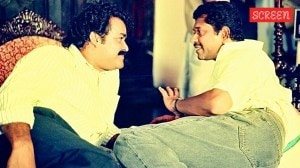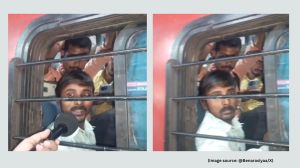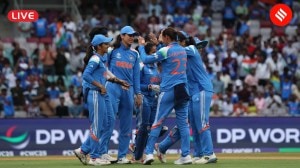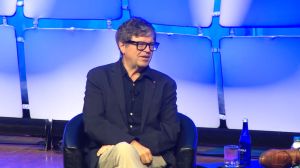Latest from Gujarat: Godhra anti-national, it will help our case
Gujarat Minister of State for Home Gordhan Zadaphia said today that to ‘‘tighten the noose’’ and ‘‘strengthen&...

Gujarat Minister of State for Home Gordhan Zadaphia said today that to ‘‘tighten the noose’’ and ‘‘strengthen’’ the chargesheet in the Godhra attack, the government will use what he calls the ‘‘anti-national’’ history of the town. For this, he has prepared a dossier which lists events from as early as 1927.
This latest spin to the Godhra attack, in which 58 were killed and which set off the carnage, comes after the police have sent conflicting signals regarding the investigation.
While Inspector General of Police (Railways) P P Agja told The Indian Express that he doubts the involvement of ISI, Rakesh Asthana, the new Deputy Inspector General (CID-Crime), who has taken over the investigation, says the ‘‘ISI angle cannot be ruled out.’’
Now Zadaphia has added his own interpretation. ‘‘The historical facts about Godhra right from the day before India got independence can be used in the chargesheet to strengthen it and prove that Godhra has always been anti-national. The attack on kar sevaks was one such incident in its history,’’ said Zadaphia speaking to The Indian Express.
Although he admits that ‘‘legally, I do not know how we can use this in court,’’ he adds in the same breath: ‘‘The anti-national history of Godhra will definitely form part of the chargesheets to tighten the noose against the culprits.’’
For this, he says his Ministry has prepared a ‘‘detailed note’’ which lists ‘‘incidents’’ since 1927.
A sample:
• 1927: One P M Shah was killd by Muslims after a scuffle.
• 1946: MLA of interim government Sadar Ali Haji flew kites on ‘Uttarayan’ with ‘Pakistan Zindabad’ written on them. ‘‘He was later posted as governor of a province in Pakistan,’’ the dossier says.
• 1948: D M Pimplekar, a watchman, was killed in private firing.
• 1948: On March 24, a milkman was killed and shops of several Hindus were torched.
• 1948: On August 15, the national flag was burnt by Muslim teachers in Godhra and by hotel owner M K Hussain Sayeed. The same day, Niranjan Natwar Shah, a teacher in Muslim School, was dismissed for singing Vande Mataram.
• 1965: Hindu shops in Godhra were burnt down by hotel owners Bidani and Bhopa. Police sub-inspector Raval was attacked by Sikandar Mewan and Abdul Aziz Khada at Salma Dabha.
• 1980: Five Hindus, including two children aged 5 and 7, were burnt alive by a mob led by a woman, Amina Bibi, at Signal Falia, the same place where the attack on Sabarmati Express occurred.
• 1990: On November 28, four Hindu teachers, including two women, teaching at the Vorwad Saphia Madrasa in Godhra, were killed. They included Praveen Shah, Pravina Dave, Kamlesh Pandya and Saroj Barot.
• And the latest, 2002: On February 27, 58 burnt alive in an attack on Sabarmati Express.
When asked if he still believed there was an ISI involvement in the Godhra attack, Zadaphia said: ‘‘To understand why the Godhra attack happened, you must first look at the history of Godhra. Then you will understand everything.’’





- 01
- 02
- 03
- 04
- 05


























